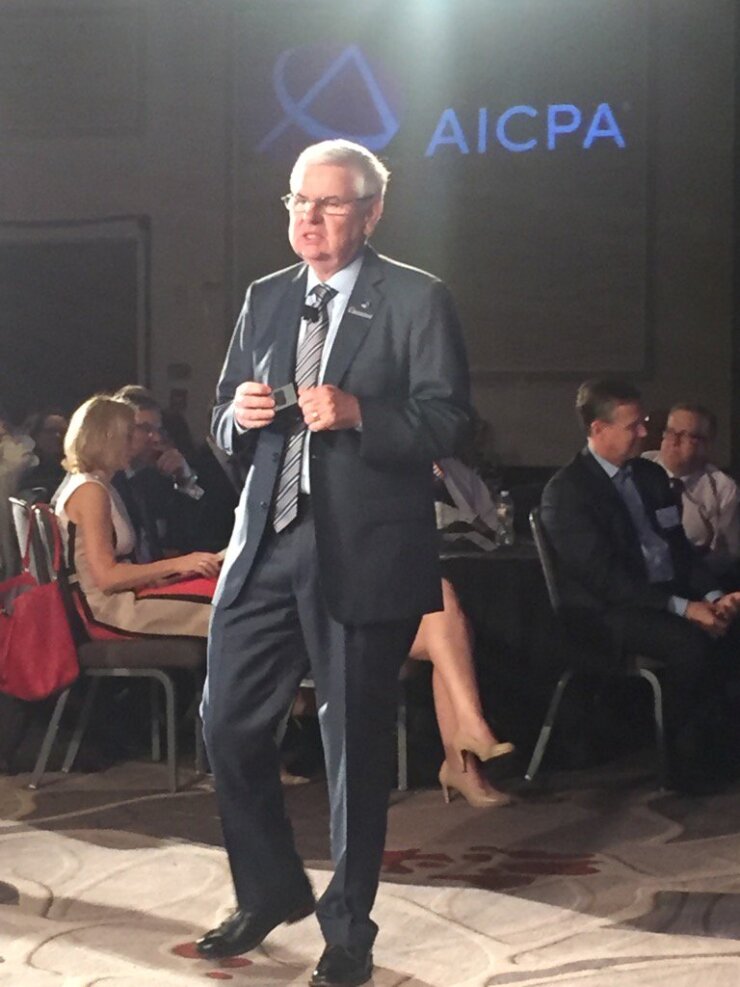The International Integrated Reporting Council has released its own
The IIRC saw increased acceptance of integrated reporting, which reports on financial information, along with other “capitals” to discuss areas such as corporate governance, sustainability, and human capital.
During the past year, the IIRC has nearly doubled the number of emerging best practice examples it is offering to businesses that are considering adopting integrated reporting, with over 400 examples now provided through the <IR> Examples Database.
The IIRC said it has strengthened its disclosures on stakeholder relationships in the past year, and improved the connectivity of reported information and the conciseness of its integrated report. It has also continued to prioritize the alignment of its internal and external reporting, with plans for further improvement ahead. This year marks the continuation of a ‘breakthrough phase” for integrated reporting, and the IIRC plans to seek strategic transition to global acceptance of integrated reporting as a corporate reporting norm.
But while integrated reporting has become more accepted abroad, it has yet to make much progress in the U.S.
“Not necessarily in the U.S., though there is some progress in the U.S., but around the world there is a good bit of progress,” said American Institute of CPAs president and CEO Barry Melancon, who is also global chairman of the IIRC. “Our integrated report actually shows that. In France, for instance, it’s expected in the next three years their top 40 companies are all going to do integrated reporting. About half do now. In Japan about 300 companies are producing integrated reports.”
He noted that in South Africa, all listed companies on the Johannesburg Stock Exchange have been producing integrated reports since 2010. In China the Ministry of Finance has integrated reporting built into its five-year plan. In India, the Securities and Exchange Board is encouraging the top 500 businesses to do integrated reporting.
“There are about 1,500 companies globally in 62 countries that are doing that type of work,” said Melancon.
In the U.S., there are 23 companies doing integrated reporting, including GE, Jones Lang LaSalle, Prudential Financial, and Clorox. “There are companies that are really embracing it,” said Melancon. “About a year ago, BlackRock CEO Larry Fink wrote to U.S. and European chief executives stating that every CEO should lay out for shareholders a strategic framework that focuses on long-term value creation. That really is what integrated reporting is all about. The CFA Institute wrote in support of that as well. CalPERS, probably the largest investor group in the U.S., called on boards to provide an integrated report that puts historical performance into context and then portrays the risks and opportunities and prospects of the company in the future, which again is what integrated reporting is all about.”
The IIRC’s integrated report talks about how integrated reporting is now in what it refers to as a “breakthrough phase.”
“We feel like the IIRC really captures that momentum, and obviously it’s appropriate for integrated reporting that the integrated reporting entity has an integrated report as well,” said Melancon.
This is the IIRC’s second integrated report, and it’s been streamlined and made more concise than last year’s report for 2015. The page count has declined from approximately 50 to 20 pages.
“Like most companies their first one isn’t going to be their best,” said Melancon. “The board worked really hard with the team to make improvements. For one thing, it’s much shorter. It uses links and things of that nature so if people want to drill down, they have that capability. It really is about putting information into people’s hands who are the stakeholders. Integrated reporting is about long term, it’s about strategy, the six capitals, and how do you communicate what’s important for people to understand about an enterprise.”
Melancon sees a role for CPAs in producing integrated reports. “The profession has been involved throughout,” he said. “Clearly in most companies it’s in the finance function, but not exclusively. One of the capitals is financial capital and another is manufacturing capital. Those you would get in the normal financial report.”
Accounting standard-setters in the U.S. and internationally are monitoring the activity of the IIRC.
“As integrated reporting becomes more common, there are a lot of aspects of integrated reporting that either the profession would be involved with helping people to produce, or potentially in some parts of the world [provide] some attestation on some of the information,” said Melancon.
He pointed out that the AICPA has long been involved in efforts to expand the boundaries of financial reporting into more general business reporting. “It is about the business reporting aspect evolving,” he said. “Just like financial reporting has evolved over the years and over the decades, this is what that evolution is about. Shareholders have different needs. Technology gives people the capability of monitoring companies that they’re interested in. The AICPA was involved in this for a really long time. If you go back to 1996 with the Jenkins Committee report, before Ed Jenkins became chairman of FASB, it was about a broader business reporting footprint. We have been supporters through this entire time. Integrated reporting has been the effort that has gotten the most momentum globally, and it’s important for it to get momentum in the U.S. as well.”
The IIRC has been expanding in other parts of the world in the meantime. “During 2016 the reach of our <IR> Networks increased by 58 percent, enabling us to reach and support increasing numbers of businesses on their journey towards integrated reporting,” said IIRC CEO Richard Howitt in a statement. “Nearly doubling the number of good practice examples and developing a global ‘training offer’ are crucial to showing that adoption of integrated reporting is about improving quality as well as numbers.”
In 2018, the IIRC plans to transition to a “global adoption” phase of its strategy, with its sights set on widespread uptake of its framework around the world.






